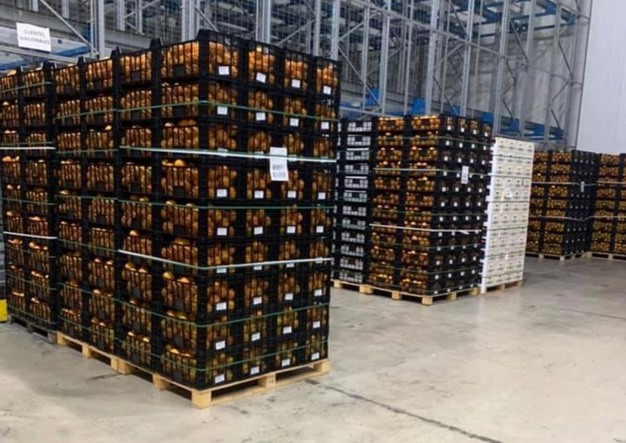Citrus imports from the southern hemisphere, both from South Africa and South America, have decreased this year. This fall is already starting to be noticeable on the first purchases in the Spanish fields before the start of the mandarin and orange seasons.
"South African Orri, Nadorcott, and Tango mandarins are already entering the market, but there's usually not a great demand for citrus fruits on these dates," stated Miguel Agustin, commercial director of the Valencian company Nostra Fruita, which last year supplied more than 50 million kilos of citrus to the main distributors in Spain. "Demand for mandarins begins to awaken at the end of September, after the start of the school period. This year, we expect there will be significantly lower availability of overseas products at that moment," he said.

"Not only were the crops depleted by frost and other adverse weather phenomena, but the local processing industry is paying very high prices, which means producers are exporting less product," the supplier stated.
"This information is already leading to an increase in the price of mandarins and the first Navelina oranges in the field, which are already being traded higher than at the beginning of the last season and that I think will be harvested prematurely in Spain," Miguel Agustin said.
According to the professional, the harvest of Satsuma-type mandarins, such as Iwasaki or Okitsu, as well as Clausellina, will start earlier this season and, since it hasn't rained much in the main producing areas, the sizes are smaller than usual, which could also happen in the first clementines of the season. "Some producers have already made some harvests, although I think it is too premature to do so. The first harvests will start in September. The fruits will have good Brix levels but a lower caliber," he said.
"Later in the calendar, there will be a drop in Clemenules yields. However, it seems there will be more Clemenvilla and, although there are oscillations in some production areas, I think production will be similar to last year. Meanwhile, Andalusia's orange production is recovering thanks to the good influence of the rains."

"If the low forecasts overseas turn out to be true, we'll have a good demand at the start of the campaign. However, We must be careful when generating alarms, as they can lead to a highly speculative citrus market in the field even when there's no lack of supply, just as it happened last season."
"You shouldn't buy fruit at source four or five months before the season starts without knowing what will happen in the market, as you might later find it's too expensive and difficult to sell," Miguel Agustin stated. "Alarming customers would only benefit other third-party sources such as Egypt. I'm afraid there could be high speculation in the field again, but I think we should pay producers decent prices so they can defend themselves in the market. Last year, Egypt collapsed the orange market, which could only recover with Valencia."
For more information:
Miguel Agustín
Nostra Fruita SL
Telephone: +34 615 22 57 31
comercial@lanostravalencia.com
